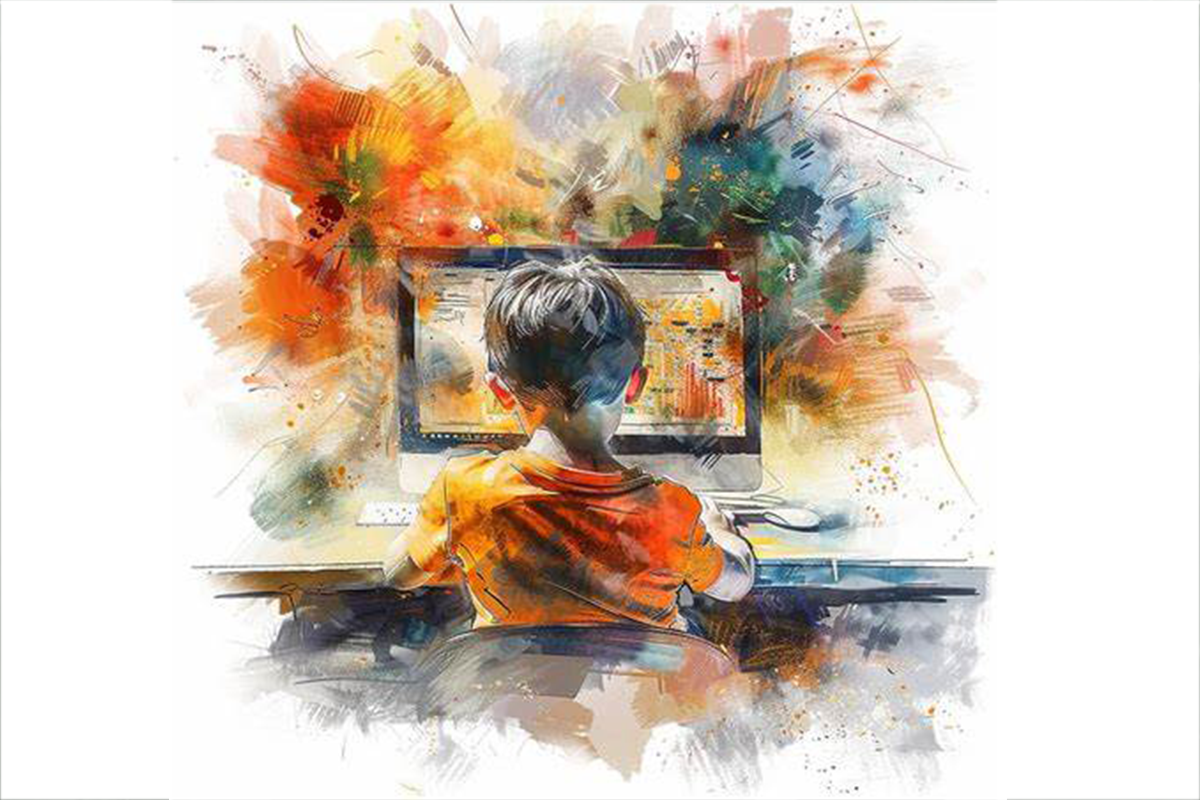Protecting Children and Vulnerable Populations in the Digital Age
The digital revolution has brought about unprecedented opportunities and challenges, transforming nearly every aspect of our lives. While the internet offers access to knowledge, entertainment, social connection, and professional growth, it also exposes users—especially children and vulnerable populations—to risks that were unimaginable just a few decades ago. Cyberbullying, identity theft, exploitation, and online radicalization are just the beginning of the dangers lurking behind a screen.
As we advance into the future, the need for robust, adaptable, and inclusive internet safety measures has never been more urgent. This article aims to explore the evolving landscape of internet safety, focusing on safeguarding children, vulnerable groups, and society as a whole. By looking at current practices and future trends, we can identify strategies to help ensure that digital spaces remain secure, inclusive, and empowering for everyone.
Understanding the Threats: A Global Digital Challenge
To protect individuals, it’s crucial to understand the scope of the threats we face in the digital age. Some of the most pressing online dangers include:
-
Cyberbullying: With the rise of social media platforms, children and young adults are increasingly vulnerable to online harassment. Cyberbullying can have devastating psychological effects, leading to anxiety, depression, and even suicidal thoughts.
-
Child Exploitation: The internet, unfortunately, serves as a platform for predatory behavior. Child exploitation remains a critical issue, with predators targeting vulnerable children through online games, social media, and chat platforms.
-
Identity Theft and Fraud: Personal information shared online is frequently targeted by cybercriminals. This poses a significant risk, particularly for vulnerable groups such as the elderly, who may be less tech-savvy and more susceptible to scams.
-
Online Radicalization: Extremist groups use the internet to spread harmful ideologies, targeting young people and vulnerable individuals to recruit them into violent ideologies or criminal activity. The digital space can often provide a gateway to these dangerous influences, as well as a means of anonymizing and protecting perpetrators.
-
Data Privacy Violations: The rapid advancement of technology means that more and more personal data is collected, shared, and stored online. The sheer volume of this data, along with the complexity of modern data breaches, places vulnerable populations at risk of exploitation by malicious actors.
-
Digital Addiction: Particularly among youth, the pressure to stay constantly connected through social media and online gaming can lead to harmful behaviors, such as sleep deprivation, isolation, and the neglect of physical health. This is exacerbated by algorithms designed to keep users engaged for as long as possible.
Future-Proofing Internet Safety: The Need for Adaptable Strategies
Given the rapidly evolving nature of technology and online threats, the concept of “future-proofing” internet safety involves preparing for new challenges while addressing current issues. Future-proofing is not just about responding to today’s problems—it’s about anticipating tomorrow’s risks and ensuring that safety measures are flexible enough to adapt to new threats.
-
Adaptive Legislation and Regulation
As technology evolves, so too must the laws and regulations designed to protect online users. Governments around the world need to establish and enforce digital safety regulations that protect children, vulnerable individuals, and society as a whole. The European Union’s General Data Protection Regulation (GDPR) is an excellent example of legislation that takes a forward-thinking approach to data privacy, holding organizations accountable for how they collect and use personal information.
However, regulations must also be dynamic and evolve as new challenges emerge. This includes ensuring that privacy laws keep up with innovations in AI, social media algorithms, and big data analytics. A key focus for future regulation should be on creating a “safety net” for vulnerable populations, ensuring they can engage in digital spaces without fear of exploitation or harm.
-
Comprehensive Digital Literacy and Education
Digital literacy is the cornerstone of effective internet safety. Children and vulnerable populations need to be equipped with the skills to navigate the digital world safely and responsibly. Educational systems around the globe must prioritize teaching digital literacy, focusing not only on how to use technology but also on the potential dangers associated with it.
By integrating digital safety education into school curricula, we can ensure that young people understand the importance of safeguarding their privacy, recognizing suspicious behavior online, and reporting harmful content. This education should be ongoing, with refresher courses and resources designed to keep up with new online threats.
Additionally, parents and caregivers must be empowered with the knowledge and tools to guide children through the digital world. Resources for digital safety should be readily available to all families, particularly those who may not have the technical expertise to monitor their children’s online activities.
-
Collaboration Between Technology Providers, Governments, and NGOs
The responsibility for online safety cannot fall solely on governments or technology companies. Collaboration between all stakeholders—governments, technology companies, NGOs, and individuals—is essential to create a safer digital ecosystem. Tech companies must be proactive in designing platforms that prioritize user safety, integrating tools such as reporting mechanisms, parental controls, and real-time monitoring systems.
On the other hand, governments must ensure that tech companies adhere to safety regulations and hold them accountable for any breaches or failures in protecting users. NGOs and advocacy groups play a critical role in raising awareness, providing support to victims, and pushing for policy changes that promote internet safety for all.
-
Building AI and Machine Learning-Based Safeguards
Artificial intelligence (AI) and machine learning (ML) are becoming integral to online safety, enabling real-time detection and prevention of harmful content, interactions, and activities. AI can be used to detect and remove explicit content, block harmful users, and identify instances of cyberbullying or exploitation. Machine learning algorithms can analyze user behavior and identify patterns that suggest predatory activity or attempts at radicalization.
AI can also play a key role in automating parental control systems, ensuring that children are not exposed to inappropriate content while online. By developing advanced AI systems that can intelligently differentiate between safe and unsafe online behavior, we can greatly enhance the protection of vulnerable populations.
-
Ensuring Accessibility and Inclusivity in Digital Safety
While much of the conversation around internet safety centers on children, it’s important to recognize that the digital world is full of vulnerable populations beyond just youth. The elderly, those with disabilities, and marginalized communities are often disproportionately affected by online risks, yet their needs are often overlooked in mainstream discussions.
Internet safety strategies must be inclusive, considering the unique challenges faced by these groups. For example, older adults may not be aware of common online scams or may struggle to keep up with rapidly changing technology. Similarly, people with disabilities may face challenges in accessing tools designed to protect them or navigating platforms that aren’t optimized for their needs.
Incorporating accessibility features into safety measures is essential to ensure that no one is left behind. Websites and online platforms must adhere to inclusive design principles, ensuring that individuals from all walks of life can access information and engage online safely.
-
Fostering Empathy and Mental Health Support
As online interactions become increasingly common, we must address the impact of digital spaces on mental health. Social media platforms, for example, have been linked to increased anxiety, depression, and loneliness, particularly among vulnerable groups like teenagers and young adults. The pressure to present an idealized version of oneself online, coupled with the prevalence of cyberbullying and harassment, can lead to significant mental health challenges.
To mitigate these effects, internet safety strategies must also focus on promoting empathy and digital well-being. Encouraging users to engage in positive online interactions, fostering inclusivity, and providing mental health resources will be crucial for future digital spaces. Technology companies should work with mental health organizations to develop tools and programs that support users’ well-being, such as self-care reminders, mental health check-ins, and easy access to professional counseling.
Conclusion: A Collaborative Vision for a Safe Digital Future
The digital age presents both remarkable opportunities and significant challenges. As we look toward the future, it’s clear that ensuring internet safety for children and vulnerable populations will require a multifaceted approach that blends education, regulation, technology, and collaboration. The internet should be a space where everyone, regardless of age, background, or abilities, can thrive without fear of exploitation or harm.
By embracing proactive measures, staying ahead of technological advancements, and fostering a culture of responsibility and empathy, we can build a future where digital spaces are safe, empowering, and inclusive. Through innovation, collaboration, and commitment, we can turn the internet into a tool for good, protecting not just today’s generation but also those to come.
Future-proofing internet safety is not just a necessity—it’s an opportunity to create a digital landscape that upholds our shared values of trust, respect, and inclusion. Together, we can make the internet a safer, better place for all.




